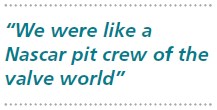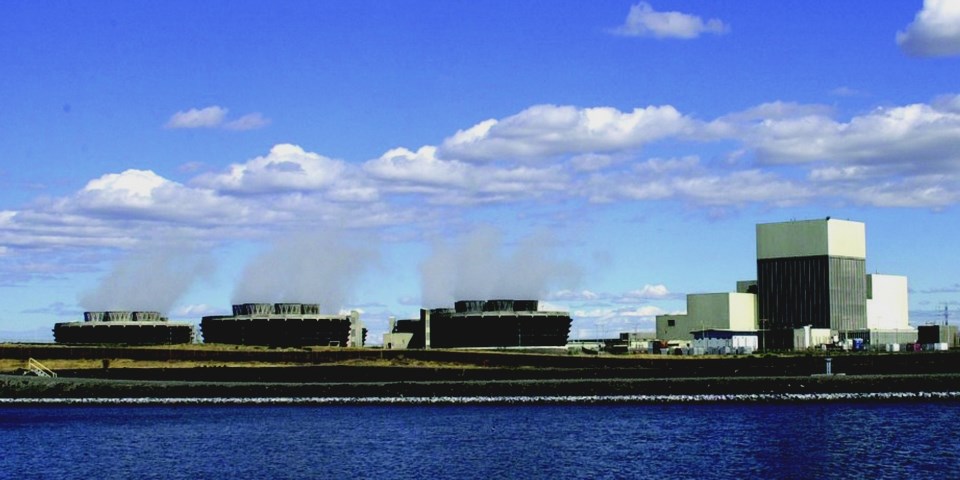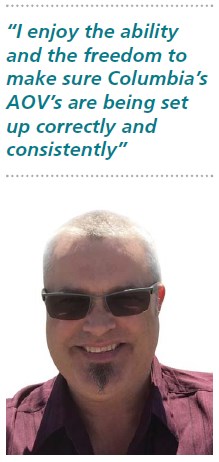Columbia Generating Station is a nuclear commercial energy facility owned and operated by Energy Northwest, a Washington state, not-for-profi t joint operating agency. Located 10 miles north of Richland, Washington, Columbia was licensed by the Nuclear Regulatory Commission (NRC) in 1983 – first produced electricity in May 1984 and entered commercial operation in December 1984. Producing 1,190 megawatts of electricity – approximately 10% of the electricity generated in Washington state – Columbia Generating Station is features 6 low-profile fan-driven cooling towers fed by the nearby Columbia River. Columbia set a record for electricity generation during a refueling outage year in 2013 by sending 8.4 million megawatt hours of electricity to the regional power grid.
Valve World: What are your main responsibilities?
Michael Rhodes: Aside from AOV Program Manager, I am also the AOV Component Engineer and the station’s Subject Matter Expert (SME) for AOV’s. I co-manage the Packing Program, am the back-up Manager for Relief Valves and manage the Preventative Maintenance (PM) database for AOV’s and Solenoid valves. I am a member of EPRI’s Training Advisory Group (TAG), Steering Committee member for the AUG (AOV Users Group) and am part of the ERO (Emergency Response Organization) here at Columbia.
What is a typical working day during an outage? How does your role change/differ from non-outage days?
MR: Outage time, all bets are off. We relocate and work directly with our valve contractor (Crane Nuclear) for the duration of the outage. No one outage day is ever predictable. With the massive amount of work we typically have, there is always something unexpected happening or some kind of fire to put out. We work through issues as a team and get the job done and done right. I have known and worked with most of the Crane guys for years and we all know what it takes to get through an outage.
What types of valves are used in your plant? How many?
MR: We have approximately 1200 AOV’s. The challenging part is that we have so many different manufacturers. For the most part, the applications are consistent, but I do have a few “Franken-Valves” if you will.
How is the nuclear industry at the moment?
MR: I think we are in good shape overall. We are looking at ways to cut costs to remain economically viable. As an Industry, we regularly communicate with and benchmark other facilities to gain outside perspectives to either validate our own processes or find a better way to do things. It’s an excellent resource to have for continuous improvement. It is a challenging process to continually look at yourself in the mirror, but it must be done and we can do it.
How has Fukushima affected the industry?
MR: Being a part of our Emergency Response Organization, this one really hits home with me. I cannot begin to imagine what those folks went through both personally and professionally to regain some kind of stability and control of those stations not to mention trying to put their own lives back together in the aftermath. Fukushima was devastating, but ultimately preventable. It forced the industry to look at a similar scenario and take measures to prevent a similar tragedy. I have two new Program AOV’s being installed as part of our upgrade and will be given the royal AOV Program treatment.

What do you see for the future of the industry?
MR: I help maintain and run a pretty amazing piece of equipment. It can be cumbersome and political a lot of the time but overall, I like what I do. I have a responsibility to make sure my components are maintained and operate as designed to keep the public safe. I take that seriously. There will always be controversy with Nuclear Power, but if we keep learning and applying what we learn, I think we will be alright. Clean, reliable power production… Go Nukes!
To read the complete article, please contact Roy van IJzendoorn for a PDF copy




